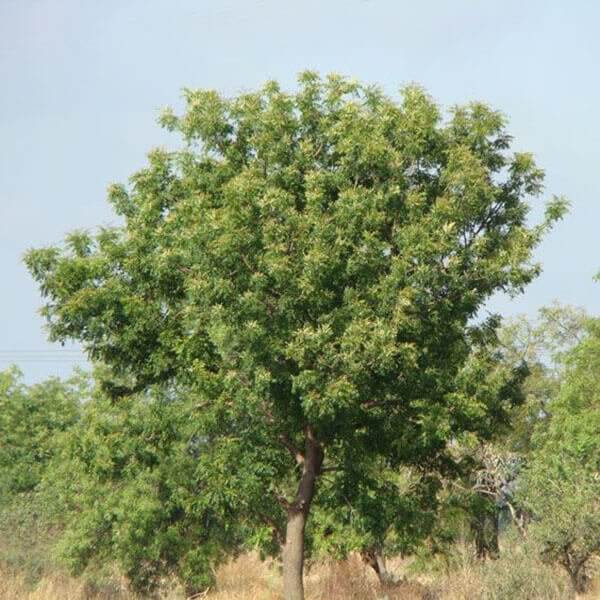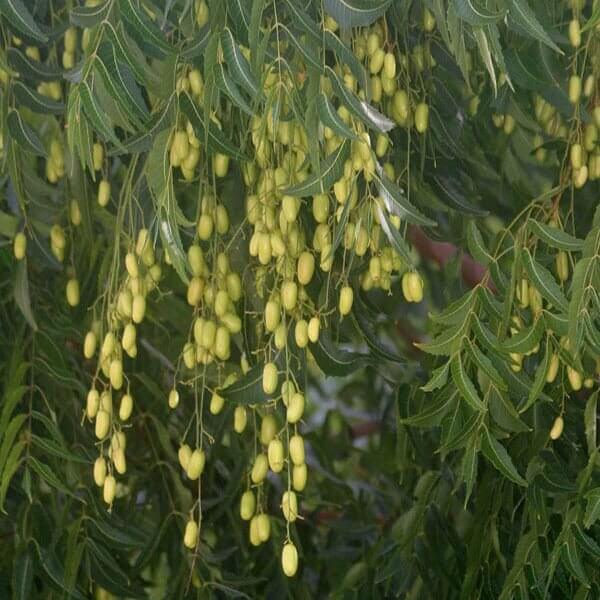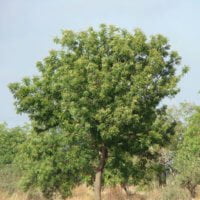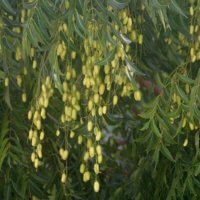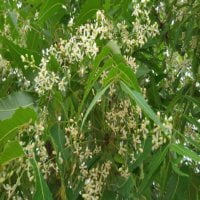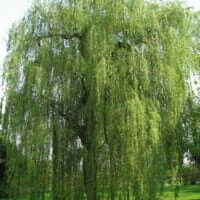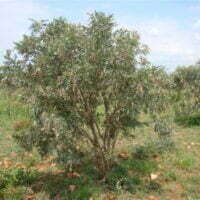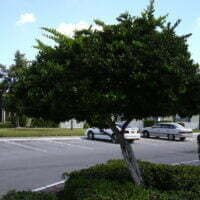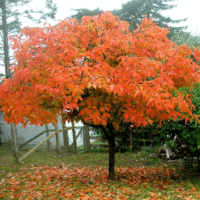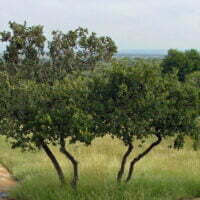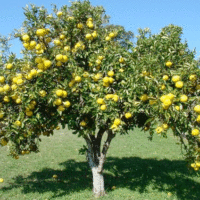| Botanical name | Azadirachta indica |
|---|---|
| Common name(s) | Neem |
| Plant Care |  Evergreen Evergreen – Never Sheds All of Its Foliage.  Full Sun Full Sun – Prefers 6 or more hours of sun per day.  Frost Sensitive Frost Sensitive – Will Get Damaged and Possibly Killed During Periods of Frost.  Low Watering Low Watering – Requires Little Water.  Moderate Maintenance Med Maintenance – Requires moderate maintenance. |
| Categories | |
| Flowers | Bears small white flowers. |
| Origin | |
| Foliage | Compound leaves that have toothed leaflets and are typically evergreen but do drop during extreme drought. |
| Uses in landscape design | Widely planted as a shade tree in hot, drought-prone areas and has over time been introduced to tropical areas around the world. Interesting container plant for indoors. |
| Fruit | The fruit is a smooth olive-like drupe which changes shape from oval to almost roundish. The fruit's skin is meagre and turns yellow when ripe. The bitter-sweet pulp is yellowish-white and very fibrous. |
| Growth Rate | Fast |
| Uses | The fruits are eaten fresh or cooked or prepared as a dessert or lemonade-type drink. Young leaves and flowers can be cooked. A very bitter flavour, they are often eaten as a pre-meal appetizer. |
| Interesting info | Leaves are used for leprosy, eye disorders, bloody nose, intestinal worms, stomach upset, loss of appetite, skin ulcers, diseases of the heart and blood vessels (cardiovascular disease), fever, diabetes, gum disease (gingivitis), and liver problems. Chewing twigs clean teeth and the oil is used as an insect repellent. |
| Harvest | Harvest fruit when it turns yellow. Leaves may be collected at any time. Pollarding is usually done on 5-10-year-old trees. |
| Yield | Fruit yield is 10-30 kg/tree annually. |
Azadirachta indica (Neem)
- Botanical name: Azadirachta indica
- Common name(s): Neem
- Categories: Herbs, Trees
Plant description:
Compound leaves that have toothed leaflets and are typically evergreen but do drop during extreme drought. This fast-growing tree bears white or pale yellow flowers that are slightly sweet-scented, followed by fruit. Valued as a medicinal plant, as a source of organic pesticides, and for its timber.
Family: Meliaceae
Azadirachta indica requirements and features
info on these icons
Moderate Maintenance
Requires moderate maintenance.
Prohibited Use Notice: No Data Scraping Allowed Except for Search Engine Indexing:
The content provided on PlantInfo.co.za is intended for personal, non-commercial use only. Unauthorized extraction, reproduction, or use of the data, including scraping, for any purpose other than search engine indexing is strictly prohibited. Violations of these terms may result in legal action. By accessing and using this website, you agree to comply with these conditions and acknowledge the legal restrictions on the use of our content.

